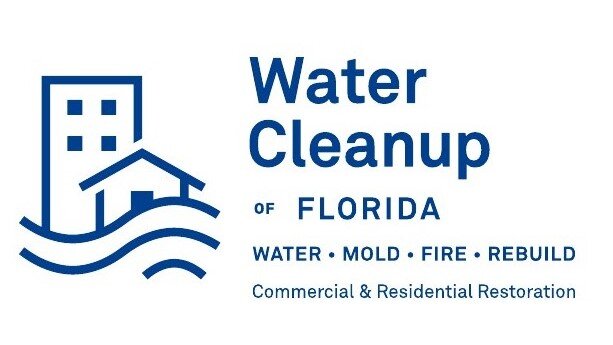How Humidity and Water Lead to Mold Growth: The Science and Solutions
Mold growth is a common issue in many homes and businesses, especially in regions with high humidity levels like South Florida. Water damage from leaks, floods, or excessive moisture can create the perfect conditions for mold spores to thrive. In this blog post, we’ll explain how humidity and water contribute to mold growth and provide effective solutions to prevent and remove mold.
The Link Between Humidity, Water, and Mold
Mold is a type of fungus that thrives in damp, warm, and poorly ventilated areas. Humidity and water intrusion are the primary factors that contribute to mold growth. Here’s how they work together:
Humidity Levels and Mold Growth:
Humidity is the amount of moisture in the air. When humidity levels rise above 60%, it creates a conducive environment for mold to develop. Condensation from high humidity can cause water to accumulate on surfaces like walls, ceilings, and floors, leading to moisture buildup that mold spores can latch onto.Water Intrusion and Mold Formation:
Water intrusion from a burst pipe, roof leak, or flood is a direct cause of mold growth. When water seeps into building materials such as drywall, insulation, or wooden structures, these materials absorb the moisture, providing mold with the perfect breeding ground. Flood damage or water leaks left untreated for more than 24-48 hours can lead to mold spores spreading, which can be harmful to both your property and health.How Mold Spreads:
Mold spreads by releasing spores into the air. These spores are microscopic and float around looking for new places to grow. When the moisture levels are high enough in an area, the mold spores land on surfaces, take root, and start growing. This process is accelerated by the continuous presence of water or humidity.
Common Areas Where Humidity and Water Lead to Mold
Bathrooms: Bathrooms are notorious for high humidity levels, especially if they lack proper ventilation. Showers and bathtubs create a moist environment, making it easy for mold to grow on walls, ceilings, and around pipes.
Basements and Crawl Spaces: These areas are typically more prone to water intrusion due to ground moisture. Without proper sealing and ventilation, basements become the ideal environment for mold growth.
Attics: Attics often face condensation issues because of temperature fluctuations. If there are leaks in the roof or improper ventilation, it can trap moisture, leading to mold development on beams and insulation.
Kitchens: Kitchens are another high-moisture area where mold can thrive. Cooking, dishwashing, and plumbing leaks can introduce water into the environment, especially if ventilation is inadequate.
Signs You Have Mold Due to Humidity and Water Damage
If you suspect mold growth in your home or office, there are several key signs to watch out for:
Musty odors: A musty, earthy smell is often one of the first indicators of mold presence.
Visible mold spots: Mold can appear as dark spots or patches on walls, ceilings, and floors, particularly in high-moisture areas.
Water stains: Water stains on walls or ceilings can indicate a moisture issue, which could lead to mold.
Peeling paint or warped wood: This is a result of prolonged exposure to water and humidity, which can weaken building materials and encourage mold growth.
How to Prevent Mold from Humidity and Water Damage
Control Humidity Levels:
Maintain indoor humidity levels below 60% to prevent mold growth. You can do this by using dehumidifiers, especially in basements and bathrooms. Ensure proper ventilation in areas like kitchens, bathrooms, and attics by installing exhaust fans.Fix Leaks Quickly:
If you experience any water damage, such as a roof leak or burst pipe, address the issue immediately. The longer water sits, the higher the chances of mold developing. Contact a professional water damage restoration service as soon as possible to mitigate the damage.Improve Ventilation:
Proper airflow in your home is essential to prevent moisture buildup. Ensure windows, doors, and vents are open when possible to allow air to circulate. Install exhaust fans in moisture-prone areas like bathrooms and kitchens.Regular Inspections:
Conduct routine checks of areas that are more prone to water damage and mold, such as basements, attics, and bathrooms. Early detection of water damage or mold growth can prevent bigger problems down the line.Professional Mold Remediation:
If you’ve already noticed mold growth, it’s important to seek professional help. Mold remediation services can safely remove the mold and treat the affected areas to prevent it from coming back. A licensed mold inspector can assess the extent of the damage and recommend the appropriate treatment.
The Importance of Professional Water Damage and Mold Remediation Services
If you’re dealing with water damage or mold issues, it’s crucial to call in a professional team that specializes in mold removal, water damage cleanup, and remediation. DIY methods can sometimes make the problem worse or fail to remove all traces of mold. A certified mold remediation company has the experience, equipment, and expertise to handle the situation safely and effectively.
Conclusion
Humidity and water damage are significant contributors to mold growth in homes and businesses. By understanding how water and humidity lead to mold, you can take steps to prevent mold growth in the first place. If mold does appear, it's essential to address it promptly with professional water damage restoration and mold remediation services to protect your property and health.
If you're in need of mold inspection, water damage cleanup, or mold removal in Delray Beach, Boca Raton, Boynton Beach, or anywhere in South Florida, don’t hesitate to reach out to Water Cleanup of Florida for a fast and thorough response.

